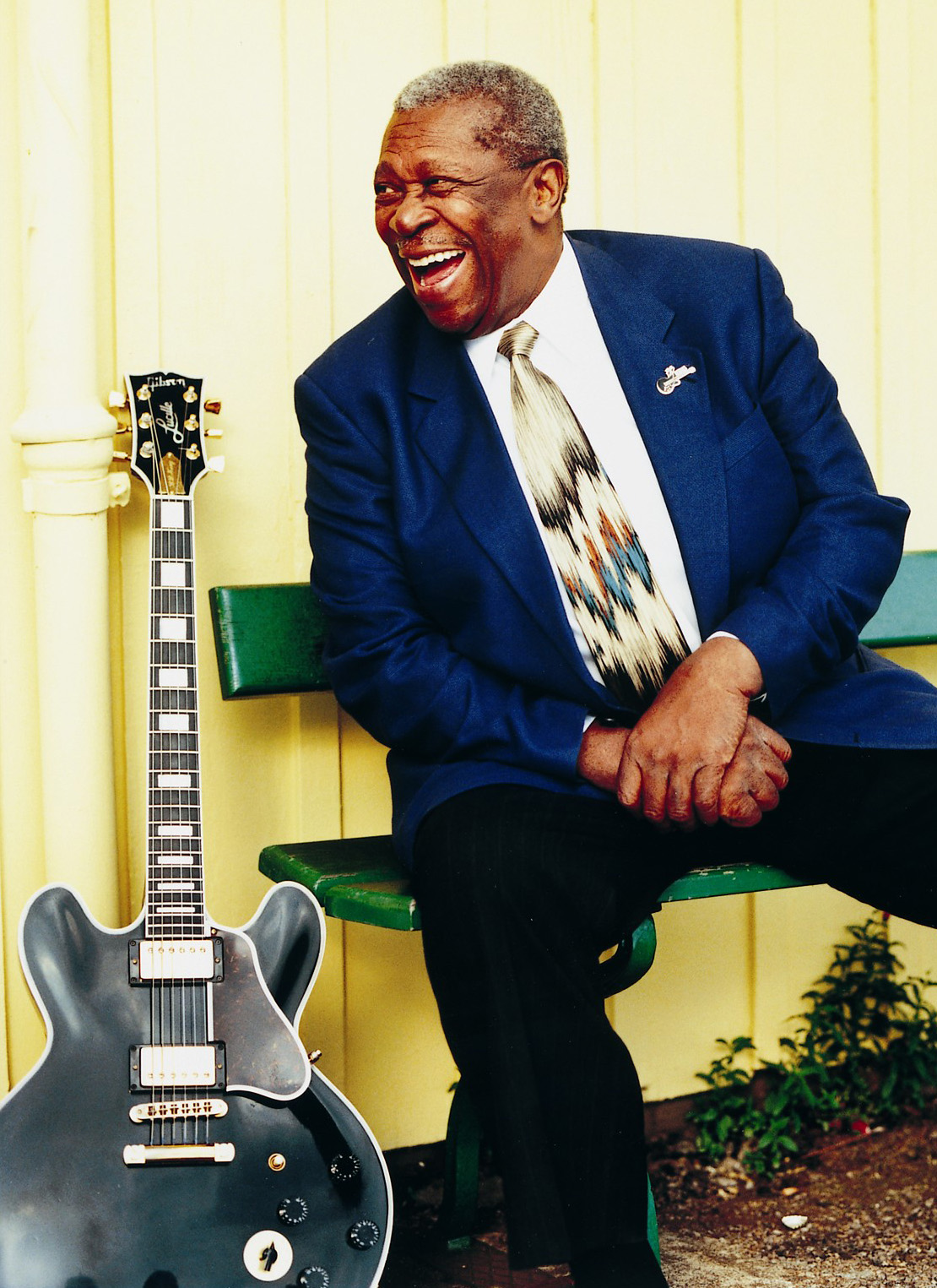Blues as a musical style was one of the most important
influences on rock music. It emerged from the Mississippi Delta region
around the turn from the 19th to the 20th centuries and like jazz, it is a
style that had its roots in the African American culture of the South.
Originally blues was played on acoustic instruments such as the guitar,
slide guitar, harmonica, and piano. As it evolved it added electric
instruments and the style migrated to the north in the middle of the 20th
century to the urban centers of the Midwest (especially Chicago).

Primary
features of the blues are a 12 bar form, improvisation, lyrics following an
AAB format that deal with depression, loneliness, and trouble, and "bent"
notes.
One of the most important figures in blues is the guitarist B.B. KIng
(the initials B.B. were shortened from his nickname of Beale Street Blues
Boy). He was born Riley B. King in 1925 and he became one of the most
admired and imitated guitarists of the 20th century. King's professional
career got going when he moved to Memphis from his native Mississippi. His
vocal style borrowed heavily from the gospel tradition and his guitar
playing---made up of economical but expressive single line riffs---grew out
of the T-Bone Walker tradition.
His first hit record was 3 O'Clock Blues in 1951. Throughout the
50s and early 60s King toured roadhouses and clubs sometimes playing more
than 300 dates a year. His band typically consisted of a rhythm section and
several horns. In the mid 60s his career got a boost from the recognition he
was given by younger guitarists like Eric Clapton. In 1969 he had his only
top 20 hit, The Thrill is Gone.
